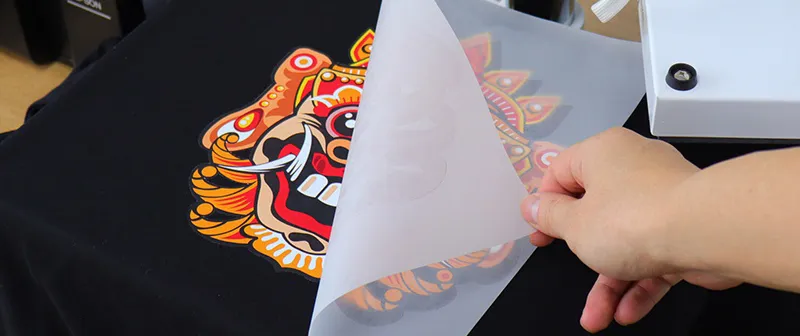Cutting-edge DTF Printing Solutions: Boost Your Apparel with Direct-to-Film Technology
Cutting-edge DTF Printing Solutions: Boost Your Apparel with Direct-to-Film Technology
Blog Article
The Future of Fashion: Exploring DTF Printing Innovation in the Textile Market
Amongst these advancements, Direct to Film (DTF) printing innovation has arised as an encouraging challenger, offering unique capabilities and chances for designers and makers alike. This innovative printing approach has actually triggered passion due to its possible to change traditional fabric printing procedures.
Advancement of Fabric Printing
From the old human beings utilizing techniques like block printing to the electronic change of today, textile printing has consistently pushed boundaries. As the craft spread to various other parts of the globe, new methods such as display printing and roller printing emerged throughout the Industrial Transformation, revolutionizing the fabric market.
The intro of digital fabric printing in the late 20th century noted a significant shift in the direction of even more functional and sustainable printing techniques. The development of fabric printing showcases an abundant history of creativity, ingenuity, and technological progress in the globe of fashion and layout.
Advantages of DTF Technology
With the evolution of fabric printing methods from ancient methods like block printing to contemporary advancements such as digital printing, the introduction of Direct-to-Fabric (DTF) modern technology has substantially boosted the efficiency and sustainability of textile printing processes. One of the main advantages of DTF innovation is its capacity to straight publish layouts onto fabric without the need for transfer papers, which decreases waste and simplifies the production process. Furthermore, DTF printing enables higher shade vibrancy and information accuracy contrasted to standard techniques, allowing fabric makers to produce high-grade and detailed layouts with convenience.
In addition, DTF modern technology is recognized for its convenience, as it can be used on numerous kinds of materials, including natural fibers like cotton, silk, and wool, in addition to synthetic materials such as polyester and nylon (DTF Printing). This adaptability opens a wide variety of possibilities for producers and designers to trying out various structures and products, bring about more innovative and one-of-a-kind items in the garment industry. On the whole, the application of DTF technology stands for a considerable advancement in fabric printing, providing numerous benefits that contribute to the future sustainability and creative thinking of the industry
Sustainability in Style Production
Stressing green methods is extremely important in contemporary style production, straightening with the growing customer demand for sustainable items. Recently, the apparel industry has actually faced boosting analysis because of its substantial environmental effect, consisting of extreme water use, chemical pollution, and textile waste. As a feedback, numerous style brand names are now integrating lasting practices into their manufacturing procedures to reduce injury to the environment.
Sustainability in fashion manufacturing incorporates various elements, such as making use of recycled and organic materials, lowering power consumption, carrying out moral labor practices, and promoting openness throughout the supply chain. In addition, developments in innovation, like DTF printing, deal possibilities to further enhance sustainability in textile production. This modern technology makes it possible for precise printing on fabrics, decreasing ink waste and water use contrasted to typical printing methods.
Design Freedom and Customization

Furthermore, DTF printing helps with customization on a range previously unattainable, enabling individualized garments and distinct pieces customized to private choices. Customers can now proactively take part in the design procedure, producing garments that reflect their design and personality. This modification not only enhances the customer experience but additionally promotes a feeling of exclusivity and originality in a market filled with mass-produced clothing. Overall, DTF printing modern technology transforms the layout landscape in the textile sector, using endless opportunities for creative expression and individualized fashion.
Effect On Supply Chain & Market Trends
DTF printing innovation in the textile industry is reshaping supply chain characteristics and affecting market fads with its effectiveness and personalization capabilities. By enabling on-demand printing and removing the demand for big stocks, DTF technology streamlines the supply chain procedure.
Furthermore, the modification capacity of DTF printing technology is changing the market patterns in the fabric industry. As an outcome, DTF technology More Help is driving a change in the direction of more ingenious and customer-centric strategies within the textile market, forming the future of fashion.

Verdict
To conclude, DTF printing innovation is revolutionizing the textile market by offering various advantages such as design freedom, sustainability, and personalization. This ingenious modern technology is reshaping the future of fashion production, affecting supply chains, and driving market fads in the direction of more efficient and environment-friendly practices. As the industry remains to develop, DTF printing will play a crucial role fit the way textiles are produced and consumed in the years to find.
From the ancient people utilizing methods like block printing to the digital transformation navigate to these guys of today, textile printing has constantly pushed boundaries. As the craft spread to other parts of the globe, brand-new approaches such as display printing and roller printing emerged during the Industrial Revolution, revolutionizing the textile sector.
The intro of electronic textile printing in the late 20th century marked a significant change in the direction of more versatile and lasting printing techniques.With the development of textile printing techniques from old techniques view it now like block printing to contemporary developments such as electronic printing, the intro of Direct-to-Fabric (DTF) innovation has significantly boosted the effectiveness and sustainability of textile printing procedures (DTF Printing).In feedback to the necessary change towards sustainability in style production, the adoption of cutting-edge innovations like DTF printing not only addresses ecological issues but likewise opens up avenues for unparalleled layout freedom and modification in the textile industry
Report this page